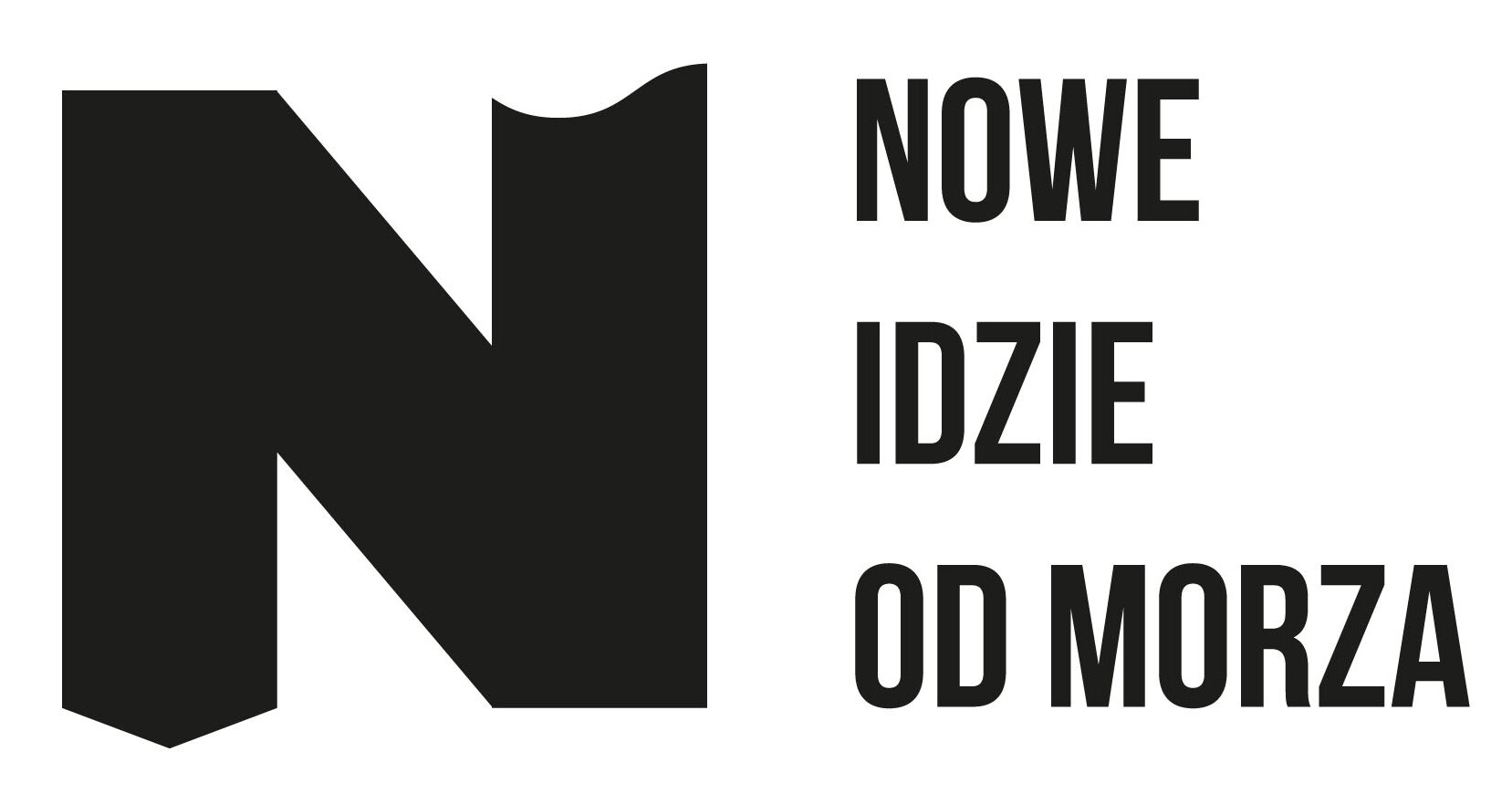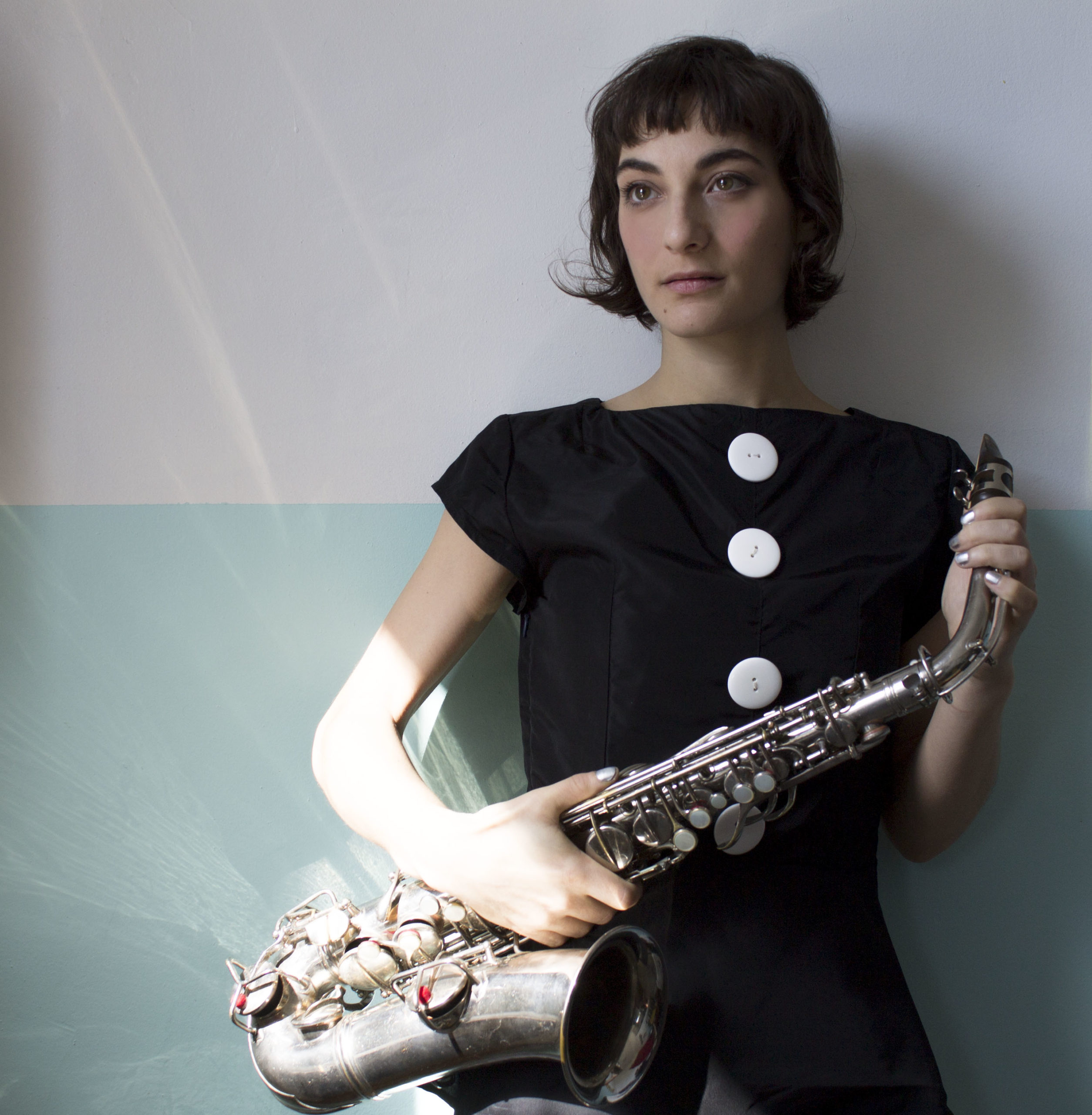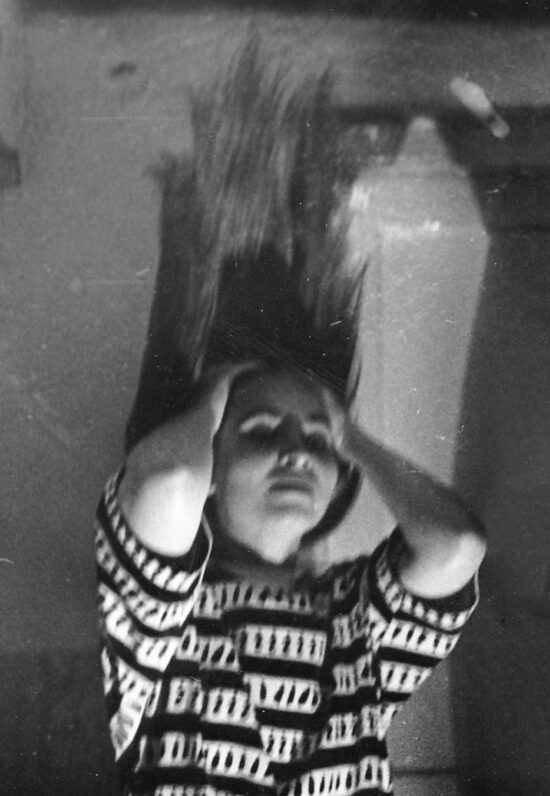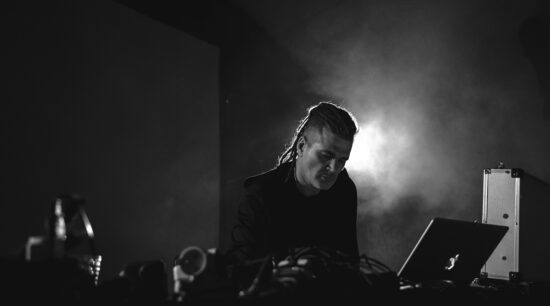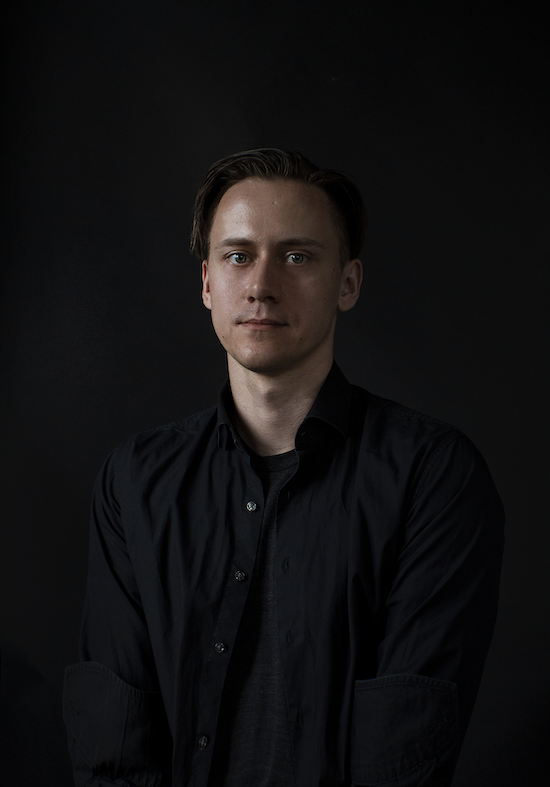– When I was in school I studied contemporary art and I was always interested in the ideas of land artists such as Robert Smithson or Nancy Holt from the 1960s, who were really concerned with the ideas of site, non-site and what does it mean to take an object or element from a site and relocate it elsewhere. I became interested in those sorts of ideas applied to music and acoustics – says artist and composer, Lea Bertucci.
Translation: Aleksandra Szkudłapska
There’s this really interesting thing in microtonality – it can speak to complex or contradictory emotional states. It’s something based on psychoacoustic phenomena, it really places the biology and the physicality of the listener at the forefront. Anything that does that has a certain kind of quality to it that forces people to question what they are hearing.
I can’t remember when was the first time I came across Lea Bertucci’s music. This could have been her record All That Is Solid Melts Into Air, playing with the title of a Marshall Bergman book, but also showing me how the American musician played with space. Or it could have been her earlier album, Axis/Atlas, where she placed greater emphasis on her fascination with field recordings and tape manipulations. Bertucci’s subsequent albums show her different faces, but also explore elements of microtonality, fascination with detail and transforming sounds. For me, a real breakthrough in my relationship with her music was Metal Aether – a resonant, vibrating album, packed with tonal details and exploring complex performative techniques.
In her further actions, Bertucci demonstrates that she’s often closer to sound-art than “ordinary” music activity.Her projects regularly take on a site-specific format and can be treated as sound installations permanently attached to the space out of which they are removed in the form of an album. Last year’s Resonant Field was recorded in a giant silo in Buffalo, New York – this is a monumental, drone, acoustic resonance, where the saxophonist and the space are almost equally responsible for the final effect. On the album, Bertucci underlines the microtonality of her instrument, its rhythmical phenomenon, but also reduces the sound.
Her latest release, Acoustic Shadows, is a continuation of this path. Her compositions for the empty space of a bridge in Cologne, Germany – composed for brass and percussion instruments – took form in a recording made with meticulous attention to sound, acoustic properties, timbres and textures of the instruments. Bertucci is a deeply conscious artist who’s looking for relationships between the acoustics and the place, and is fascinated with found sounds: be it acoustic effects, field recordings or tape loops. This shines through in her collaboration with Amirtha Kidambi, which culminated in the album Phase Eclipse (2019).
When the Covid-19 pandemic broke out, Lea Bertucci was just about to embark on a European tour; she was in Portugal. Coronavirus quashed her plans, and she interrupted her residency on the outskirts of Europe to return to New York. We managed to talk during this moment of suspension – a day after her first online concert streamed as part of the amazing Experimental Sound Studio series.
We talked about her fascination with places, acoustic effects and explorations in the scope of field recordings and improvisation. But also about the pandemic, its effect on the music scene, and what the situation may bring in terms of the future.
JAKUB KNERA: We’re talking during the Covid-19 pandemic. When did it catch you and how did you find yourself in it?
LEA BERTUCCI: I was touring in Europe and in a couple of days all my shows got cancelled. At first I thought: “I’m in a place that is pretty great” – it was an artist residency and I love Portugal. I thought I was going to stay there and watch how things play out. But eventually things got really crazy, so I needed to come home. I flew back to the US at the end of March, it was a weird experience. They didn’t test me or anything coming back to country, which wasn’t really surprising unfortunately.
What is the situation like in the US? A lot has changed in the last weeks.
I’m in New York City and things here are really bad. Unfortunately, it’s going to get a lot worse, too. I’ve been trying to manage this feeling that everything is on fire and the person who is supposed to put it out is acting like a petulant child. It’s really scary. I’m not sick or anything, but unfortunately some of my friends are starting to get sick.
Our government is talking about elections instead of dealing with the virus.
We have elections in November, and I don’t know what’s going to happen by then. I don’t know if it’s going to be better or what. Politicians – especially right-wing ones – are definitely going to seize this opportunity to hold on the power. I’m kind of eyeing the door, looking for the exit here.
And you can’t plan anything in advance.
Exactly, I’m just in my apartment now. It’s really crazy, the complete lack of social relief. New York is one of the most expensive cities in the world and there’s no rent relief. Scary times.
I hope there’s some light in the future.
I hope we can make a better world. You know what I did the other day? I googled the social and economic aspects of the black plague. I was afraid to do that at first, but I eventually read all these academics papers about how it in fact brought about the end of feudalism, the end of the lord-serf system. So I thought that maybe the same thing could happen again now, ‘cos that’s kind of what we live in. That it could bring about the end of capitalism.
The economic and social aspects are the most difficult?
Definitely. I think the entire way we are going travel and socialize will be very different after this. It’s quite a moment.
But yesterday you played a short online concert as part of The Quarantine Concerts in Experimental Sound Studio. What do you think about this idea?
Yes, I did my first online concert! (laughs) I think people are trying to figure out how to remain active. Any performing art is getting hit really hard – our whole livelihoods depends on social gatherings. We have to find different ways to continuing to be present. The ESS concerts are great – all the curation is amazing. Actually, it’s very cool because you can’t get those people together in the same room all the time – it’s kind of an interesting opportunity.
At the beginning, online shows were kind of fun, but a lot of musicians have in the meantime really felt the lack regular shows – and related income. Do you think online shows could help? What’s your experience about playing live via streaming?
The experience of doing that concert was really strange, because there’s absolutely no audience engagement from performer to audience. There is no way for me to know how my sounds are falling. At the end there’s no applause, so it’s just like “the end”. As a performer you’re used to some degree of feedback. When you don’t get that, it’s really strange.
The online concerts are a very new thing. Over the next few months there’s going to be more refinement happening. I think the technology is going to be shifting and the methods for doing online concerts will change a little bit. We’ll kind of see what format really works best.
For me it’s not even performing live that I miss but playing with other people – I can’t play music with my friends anymore. That is the more frustrating thing. I have all this time now in my studio, I come up with ideas and I can’t come up with any ideas that would involve any other people (laughs). The nature of collaboration musically is going to be shifting a lot too.
These online concerts are played mostly in musicians’ homes. When you played, to me, you tried to leave that ‘homely’ atmosphere behind, by playing with light, but also by building an acoustic space full of reverb you use with your instruments.
My roommate, Bradley Eros, is an experimental filmmaker and he does a lot of extended projections. Having him there as a collaborator was very nice. I’ve gone to a few online concerts – we are looking through a screen, so the visual element is more important because we are removed from the directness of the performer. It’s nice to have a more present visual element than somebody sitting in front of a computer playing their instrument. I don’t mean that it can’t be satisfying, but I wanted to take a more cinematic approach to the set.
Two years ago, when you played at Unsound Festival, the result was also rather cinematic. The visual effect was equally important.
I think a lot about the visual aspects of performing live. The concert at Unsound – which is the way I perform with projections pretty often – was using a video projection on the back of my jacket. I was wearing a jacket with a piece of reflective material. The projection is reflected onto the wall behind me and the light moves in really subtle ways based on how I’m standing and how I’m moving – there is a really direct and integrated relationship between the visual and the sound. It’s dependent on my physicality.
This performance aspect is one thing, but what I really like in your music is your way of creating space. One way is by using delay, but the other aspect is playing in – and with – different locations. For your record Resonant Field, you recorded music in the Marine A Grain Elevator at Silo City in Buffalo, New York. How do you prepare for this site-specific sessions and how do you search for the appropriate space?
I’m very interested in a site-specific and site-responsive way.
When I was in school I studied contemporary art and I was always interested in the ideas of land artists such as Robert Smithson or Nancy Holt from the 1960s, who were really concerned with the ideas of site, non-site and what does it mean to take an object or element from a site and relocate it elsewhere. I became interested in those sorts of ideas applied to music and acoustics.
I’ve had the fortune of being able to go to some fantastically amazing acoustic places. This fascination with architecture, locating the human body within the built environment through acoustics that kind of guides this interest.
You were doing the residence in Buffalo, but at the beginning it wasn’t supposed to turn into a record. What changed? How do you work with that kind of space?
I did that residency and the actual objective – which I did, and it is an unreleased piece of music – is a saxophone quartet that I wrote for that space. My process was fairly experimental – I just went into this space and spent a month going there almost every day. It was really about improvising and hearing different types of sounds, being present and listening, seeing which pitches excited the acoustics, which sounds bounced in certain ways and changing my physical proximity to different spaces within the silos. It was a really extraordinary acoustic environment – it was all cast concrete. It’s a very hard surface and the sound tends to really bounce in this amazing way. When you have a curve, the kind of reflection and refraction of sound can be really super amazing. It was a really experimental process of me going, improvising, seeing what works or not, making recordings and analysing them, listening back.
The material that went on Resonant Field was actually recordings that I had made solo in that space for the purposes of researching and developing my saxophone quartet. I never really intended for that material to be an album, but I realized that there was something special about those sounds, and I ended up using them.
Your new records Acoustic Shadows, which took place during the Brückenmusik series, is also connected with a specific space.
I’ve also taken a more technical approach, and this is how I went about things for this release. I was able to do a site visit to the Deutz Suspension Bridge in Cologne, Germany –that piece takes place in the enclosed hollow body of a bridge. I was able to do one short site visit but then I had the team who were producing the event make acoustic analysis recordings: impulse-response tests and then sine wave sweeps to determine what the resonant frequency of the space is. I based the tonality of the piece on the resonant frequency which was somewhere around C2. Using these kinds of technical analyses I wanted to create musical ways of exciting that space through direct physical acoustics.
What was your main idea or purpose in preparing compositions for brass and for percussion ensembles? Why did you choose these instruments and what acoustic aspects of them or of the space did you want to show? You also perform there solo – what is so fascinating for you in this space?
I chose the particular instruments because I felt they would be able to excite the space acoustically. Brass instruments are very directional and they are able to produce sounds that can ricochet and reflect throughout the space. I chose the particular percussion instruments for similar reasons: the woodblocks could act as impulses, the timpani sound interacted well with the sound of a tram that would occasionally pass over the roadway on top of the bridge, emitting an ultra-low frequency laterally traveling wave of sound.
The original performance was designed for three musical events: solo alto sax, brass and then percussion. For the purposes of this release, in order to create a cohesive work that is listenable in an album format, I decided to draw only from the brass and percussion performances. Each of these pieces were originally over 50 minutes in length, so there was considerable editing that I had to do to fit them on an LP.
Space in your music is one thing, the second important one is the saxophone you are playing. It’s a very loud instrument, it sounds well in many different spaces, especially reverberating ones. How did you start playing it?
I started playing saxophone when I was 9 years old as part of a school band program. I got fairly serious about it when I was in junior high school – I was playing pretty conventional music, like jazz or classical music. I was doing it for quite a while and then I’ve got disillusioned with the way the pedagogy surrounding music and especially jazz. When I went to university, I majored in visual arts which really influences the way that I go about things with my music practice. I stopped playing for quite a few years when I was in school and slowly started coming back to music. During that time, I started getting into experimental, electroacoustic and noise music.
I had sold my instrument before but then I got the saxophone again – I play it now and it’s my friend’s mother’s instrument which was in the basement for about 30 years. It’s pretty much unplayable by conventional standards – when I try to play a major scale it sounds totally wrong. But it was actually kind of an interesting opportunity – I could sort of undo my training and unlearn the clichés of what had been drooled into me growing up. It was a chance to approach the instrument from a completely different perspective: texture, timbre, extended techniques and stuff like that.
That was my process – in quarantine I’m back to playing Bach so I came full circle with that (laughs).
Tell me more about your ideas for playing in and with places. How important is it for you to have the idea at the beginning and when do you find ideas during the process?
I think that’s something I’ve learned over the years. Sometimes I can be a little bit stubborn and sometimes that stubbornness has really worked for me – and sometimes it doesn’t. If I approach something with an idea, I really want to make that idea happen, but one of things that I had to learn is that the process itself is an act of discovery. It’s important to not be too strict with your ideas and rather let the process guide you towards what is right. Sometimes that means abandoning the original idea that you had. It’s something that I’ve had to really learn over the years.
In one of the interviews you say that “every improvisation is site-specific”. Do you feel more associated with conceptualism or improvisation?
I don’t think those two things are necessarily in opposition. I think that I’m mostly interested in moments of discovery but that also speak to some larger conceptual meaning that I’m having.
Another interesting element in your music are field recordings and using tape recorders, which are very strongly visible in your music with Amirtha Kidambi. How did you start using this element in your music?
Tape is definitely a big part of my practice. Many years ago, I became friends with an artist named G Lucas Crane – he does a lot of cassette collage and he was one of the first people that introduced me to the idea of using tape, what are the possibilities of tape collage and tape recordings. I like to use tape in a few different ways. I do field recordings with microcassettes, which is very low fidelity method. I really like mixing fidelities – having some hi-fi sounds and then other like washes of lo-fi noise. So, there’s a kind of textural element to it.
In collaboration with Amirtha I use reel-to-reel tapes. I just really like the way that tape has this very visceral, direct relationship to the sound that it’s processing. It’s not really filtering sounds, it’s extending sounds. That was kind of the idea of the collaboration with Amirtha – it’s an extension of her voice through an electronic medium.
What do you like most in tape machines?
You can use them as instruments, and you can manipulate them in different ways. With Amirtha I’m really playing that tape machine as an instrument. Using tape has been a big way that I tried to supplement whatever more conventional musical training I have.
Using tapes reminds me your Axis/Atlas record, where in the first track you are using an earworm from the Bulgarian folk song “Dragano Draganke” to imagine the process of forgetting the melody. That reminds me of William Basinski’s idea of Disintegration Loops.
I think that any recorded medium is a process of translation. You are translating a live sound into a recorded representation of that sound. Tape happens to have a lot of colour to it, so the process of translation becomes more interesting – you can really change the nature of sound through the medium itself.
You mentioned that the residency in Buffalo was supposed to yield a composition for a saxophone quartet, and yet ultimately you released music that you played yourself. Do you divide your music into pieces you compose and ones you play? In what way are these two processes important for you?
I use improvisation as a process of my composition. I improvise something, record it, remember it, come back to it and use whatever happens within an improvisation in the composition. A lot of the time my compositions depend on an improvisation process. Performing composition versus an improvisation is a very different kind of experience – I’ve spent a lot of years collaborating with different people in an improvisation context. Right now my only real ongoing collaboration is with Amirtha and this is completely improvised. It’s a very different process than what my solo set is. I like the idea of range as an artist and not just rehashing the same ideas over and over again. I really like to branch out and expand, do things that are a little bit different. The project with Amirtha allows me to flex those kind of improvisation muscles that I don’t usually get to use when I’m just playing solo.
I like this aspect where your acoustic sounds overlap with electronics. In Experimental Sound Studio you were playing the saxophone, then looping it and adding new layers of electronics. When one element remains still, you add another layer.
I think that it’s always nice to have the kind of grounding in an instrument. I do have works that are just for tape, that are just electronic, but I do really like the organic quality of an instrument. Whatever kind of processing that I do with electronics is to preserve or bring out a certain kind of organic sounds. I’m not so interested in processing an instrument and making it sounds synthetic. I really want that kind of natural quality to come out. In terms of juxtaposing it with electronic sounds I think it can be a nice contrast but my approach to the electronic sounds is not so much into synthesis. I actually really into organic sounds, that’s why I’m so interested in field recordings – I’m very much interested in the sounds that are of the world.
Your music also features elements of microtonality, alternate tunings – there are some other artists like Ellen Arkbro and Sarah Davaci who are very much into it. How do you see yourself against this generation of people who are interested into it?
I see the other people you mentioned really as like-minded travellers, sisters in the same kind of experiment. We all have different musical backgrounds, we play different kinds of instruments, but we all have very similar sorts of aesthetics and musical interests.
There’s this really interesting thing in microtonality – it can speak to complex or contradictory emotional states. It’s something based on psychoacoustic phenomena, it really places the biology and the physicality of the listener at the forefront. Anything that does that has a certain kind of quality to it that forces people to question what they are hearing. Life is obviously full of contradictions and dissonance – microtonality can really speak to that quality in life.
We’ve been talking about different people you play with, different spaces and different equipment. But let’s come back to the beginning of our conversation: we are stuck in our homes, not sure what’s coming next. What’s your perspective for the future?
First of all, I feel very lucky that I have a home to live in that is comfortable and that I can make my work in. I live in a country where there are half of million homeless people – those are the people who are actually really suffering right now. I feel really grateful to even have a living situation.
Right now is an opportunity for a level of practice, development, and engagement that I usually don’t get to have because I’m not performing anymore regularly, and I can’t leave. I really have the opportunity to get deep – in a number of ways – to develop things to a greater extent that I normally would. I always say that the number one thing that my work suffers from is lack of time, just because I’m busy: I travel and I’m in the world quite a lot. There’s missed opportunities because I wasn’t able to have the time to develop a work to its greatest extent. Now, one of the great things about this horrible pandemic is that I have the time and concentration to go deeper that I would normally. I feel really grateful for being able to have the privilege of doing that.
I think that over the next few months we’re going to see a shift towards introspection and greater development in music. I hope.
